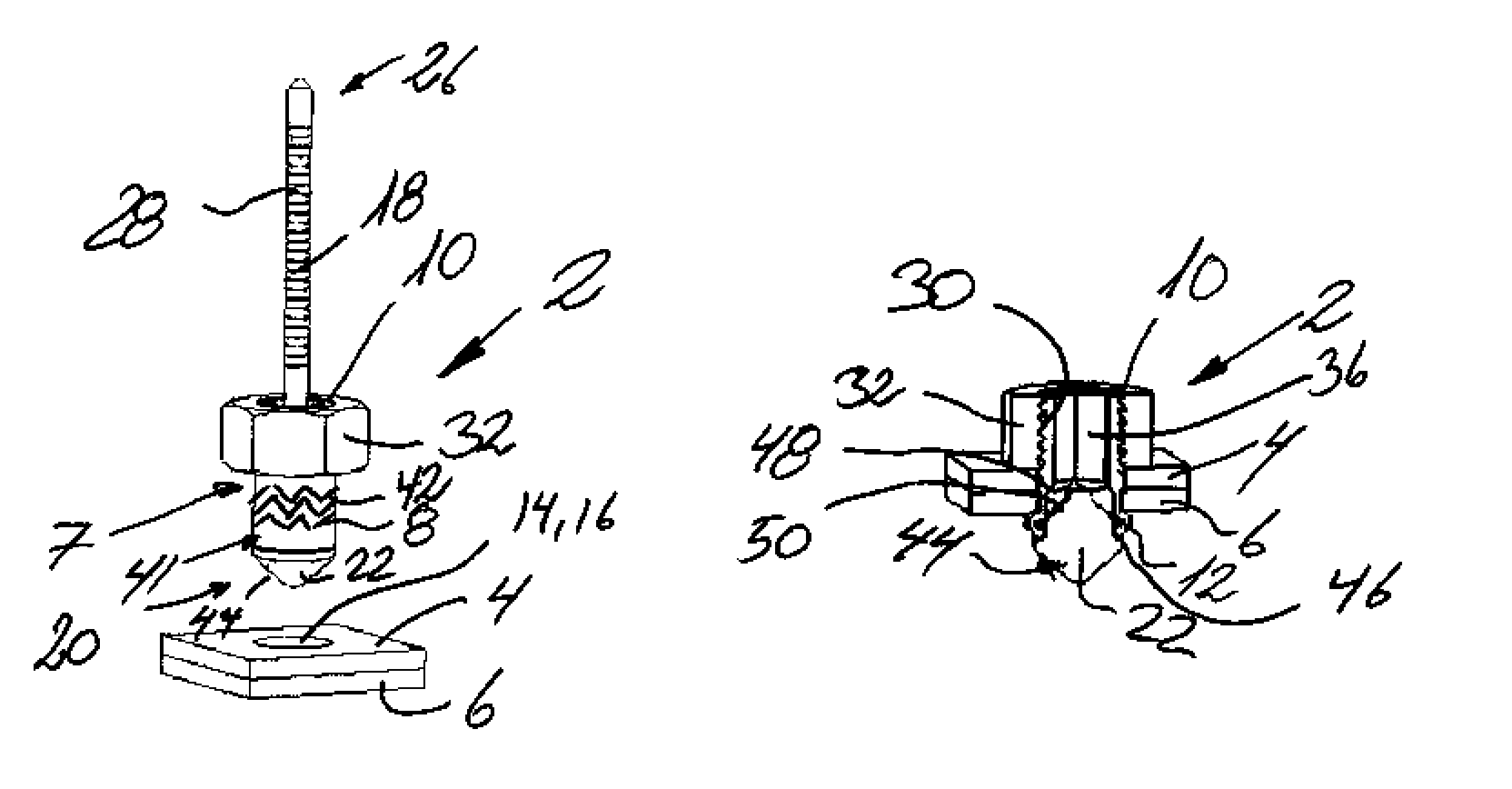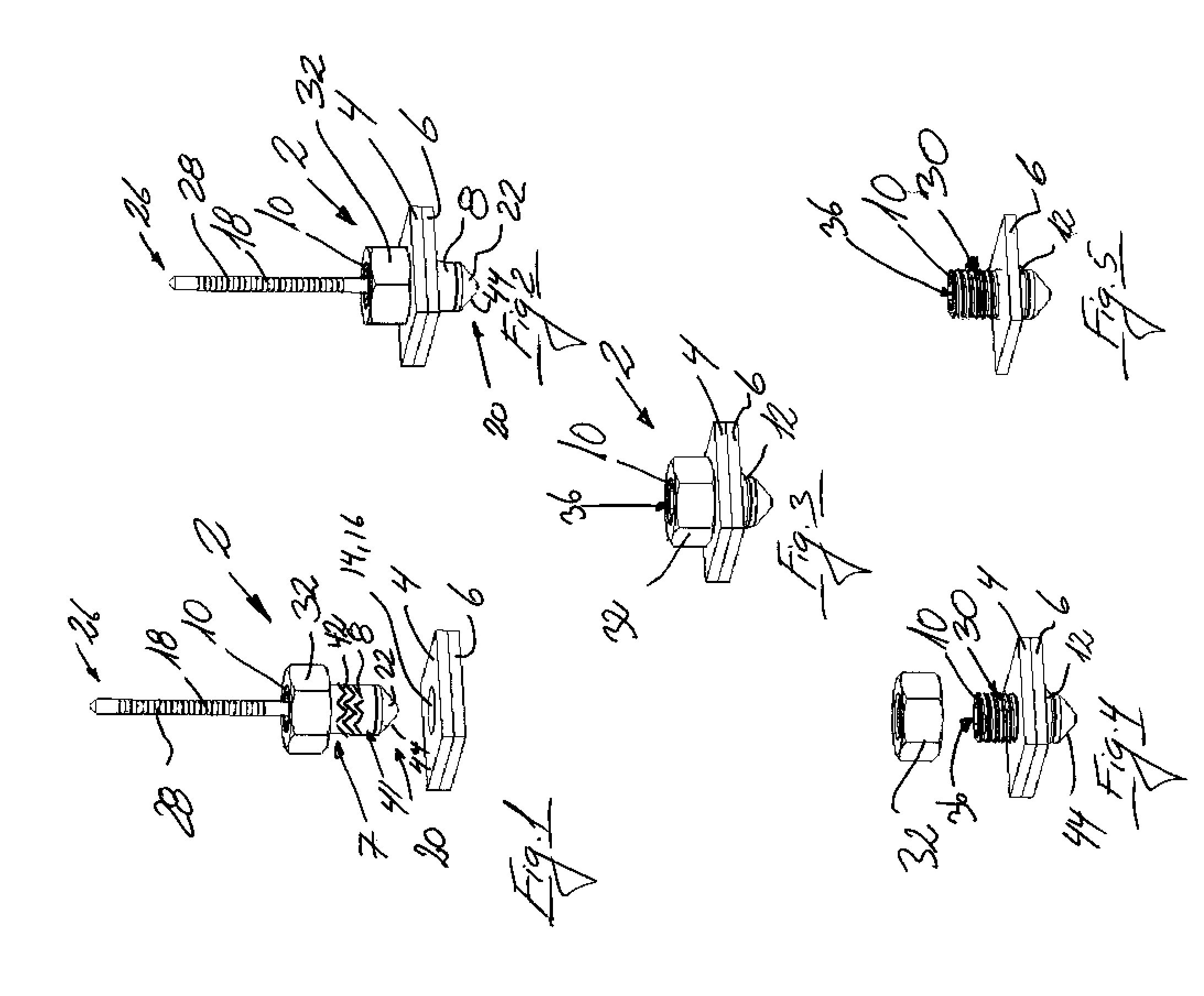Mounting/assembly element for assembling workpieces, particularly overlapping plates and/or components
a technology for assembling workpieces and components, applied in the direction of fastening means, screws, dowels, etc., can solve the problems of nut, nut, nut, unable to withstand the turning moment, and not being able to establish sufficient resisting moment, etc., to achieve a tighter nut and stable fastening
- Summary
- Abstract
- Description
- Claims
- Application Information
AI Technical Summary
Benefits of technology
Problems solved by technology
Method used
Image
Examples
Embodiment Construction
[0039]In FIG. 1, a first embodiment of the mounting / assembly element 2 for use in the assembly of items, particularly overlapping plate parts 4, 6, and components, is shown.
[0040]The mounting / assembly element 2 comprises a rivet bush 7 with a first end 8 and a second end 10. As is shown more clearly in FIGS. 6-10, the first end 8 comprises a deformable zone 12 for insertion through coincident holes 14, 16 in the items 4, 6, and in the rivet bush 7, there is housed a draw-rod 18, the first end 20 of which comprises a draw-head 22 with a greater diameter than the draw-rod 18 and a break zone 24 above the draw-head 22.
[0041]The draw-head 22 is housed in the deformable zone 8, 12 of the rivet bush. The second end 26 of the draw-rod 18 extends up out of the second end 10 of the rivet bush 7, and in the illustrated embodiment, comprises a corrugation 28 which serves to provide a better grip for the draw tool which is used for the mounting / fastening of the element 2 in the lowermost plate ...
PUM
 Login to View More
Login to View More Abstract
Description
Claims
Application Information
 Login to View More
Login to View More - R&D
- Intellectual Property
- Life Sciences
- Materials
- Tech Scout
- Unparalleled Data Quality
- Higher Quality Content
- 60% Fewer Hallucinations
Browse by: Latest US Patents, China's latest patents, Technical Efficacy Thesaurus, Application Domain, Technology Topic, Popular Technical Reports.
© 2025 PatSnap. All rights reserved.Legal|Privacy policy|Modern Slavery Act Transparency Statement|Sitemap|About US| Contact US: help@patsnap.com



